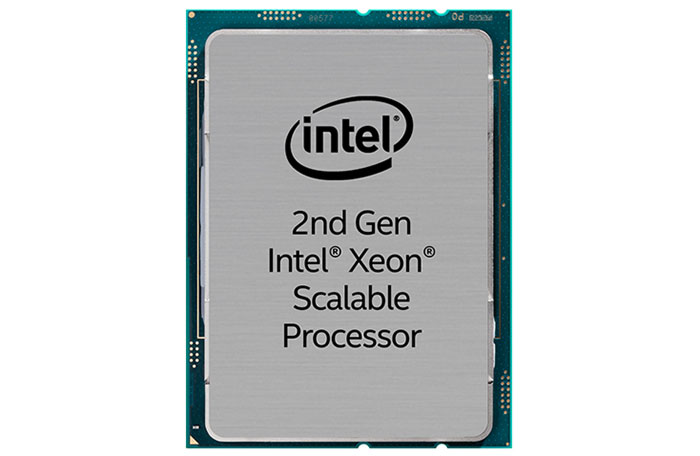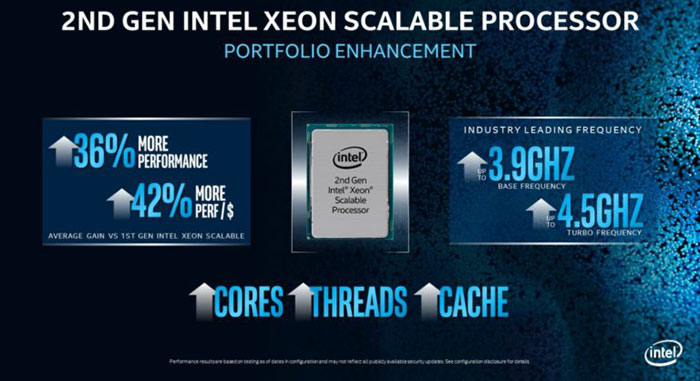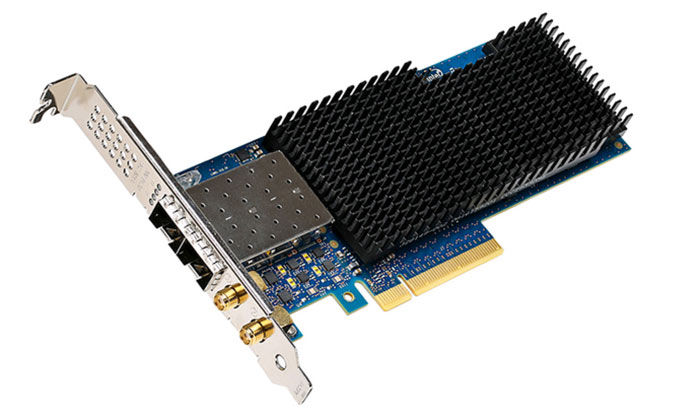Intel has fired a new salvo of 2nd gen Xeon Scalable processor portfolio for the data centre market, looking at customers providing cloud, network and edge products and services. Its latest entrants to the market are said to offer compelling performance and performance-per-dollar to cement Intel’s data centre leadership. Separately, Intel has announced a portfolio of 5G network infrastructure products including; the Intel Atom P5900 platform, the Diamond Mesa ASIC for 5G acceleration, and the Ethernet 700 Series Network Adapter.

2nd Gen Xeon Scalable processors
The headlining qualities of the new 2nd gen Intel Xeon Scalable processors are that they offer an average of 1.36-times higher performance and 1.42-times better performance-per-dollar compared to their predecessors. Intel used a mixture of adding more cores, increasing cache sizes, and/or boosting processor frequency to deliver the headline benefits.

You can see the full raft of processors released within the embedded table with specs and pricing, but Intel wanted to highlight the following use cases that are being targeted:
- Industry-leading frequencies for high-performance usages: New Intel Xeon Gold 6200 processors deliver up to 4.5GHz processor frequency (e.g. the Intel Xeon Gold 6256 and 6250) with Intel Turbo Boost Technology and up to 33 per cent more processor cache, offering customers "breakthrough performance for frequency-fueled workloads".
- Enhanced performance for mainstream usages: New Intel Xeon Gold 6200R and 5200R processors deliver built-in value through a combination of higher base and Intel Turbo Boost Technology frequencies, in addition to increased processor cache.
- Increased value and capability for entry-level, edge, networking and IoT usages: New Intel Xeon Gold 6200U, Silver 4200R, Sliver 4210T and Bronze 3200R processors deliver increased value for single-socket entry-level servers, as well as edge, networking and internet of things (IoT) usages.
Intel talked up what it sees as USPs for the new 2nd gen Intel Xeon Scalable processors, such as built-in AI acceleration, DL Boost technology, and support for Optane persistent memory technology.
A full list of 2nd gen Intel Xeon Scalable processors, including those launched last year, is available here
Intel says systems packing its 2nd gen Xeon Scalable processors from leading OEMs and ODMs will be available immediately with more in the coming weeks.
5G infrastructure products
As well as the new Xeon server processors Intel's Atom P5900 platform was launched today. This highly integrated 10nm SoC is designed to meet critical 5G network needs, including high bandwidth and low latency, to capably power 5G base stations today and in the future.

'Diamond Mesa' is Intel's first next-generation structured ASIC for 5G network acceleration. For workloads that don't require the full programmability of FPGAs, Intel says that this structured ASIC can offer double the performance efficiency. Intel is making Diamond Mesa ASICs available to early access customers now.

The Intel Ethernet 700 Series Network Adapter with hardware-enhanced Precision Time Protocol, is the first 5G network-optimised Ethernet NIC, says Intel. The chipmaker explains that "latency requirements across 5G network implementations have challenged existing Ethernet technology, especially in edge servers," and this is where the Ethernet 700 series adapter delivers. The new Ethernet adapter specifically features accurate time synchronization across the network at a cost-effective price point to work better in 5G systems.

In addition to its hardware, announcement Intel has expanded its computing software toolkits for networks. OpenNESS now supports standalone 5GNR and Enhanced Platform Awareness (EPA) deployments, it says. Furthermore, OpenNESS complements Intel's OpenVINO and Open Visual Cloud for edge computing development needs.
Big name companies that are collaborating with Intel on 5G networks include; Altiostar, Dell, Deutsche Telecom, HPE, Lenovo, QCT, Rakuten, VMware and ZTE.







